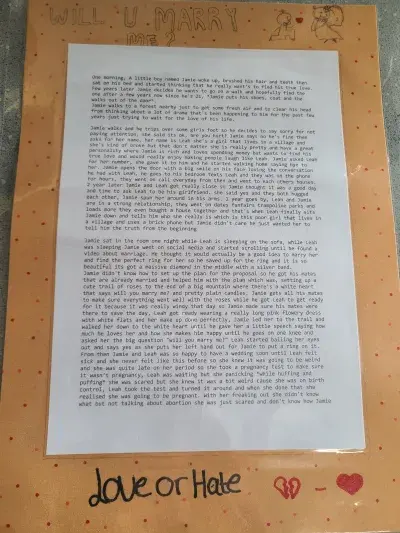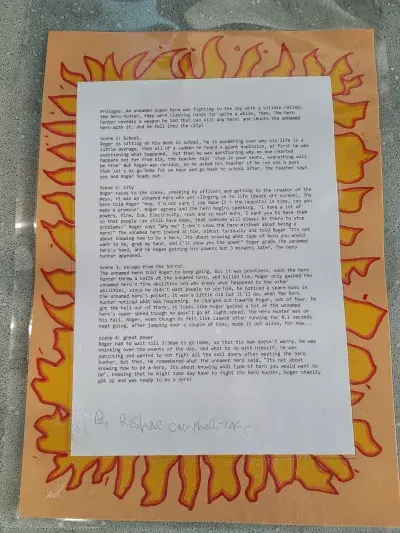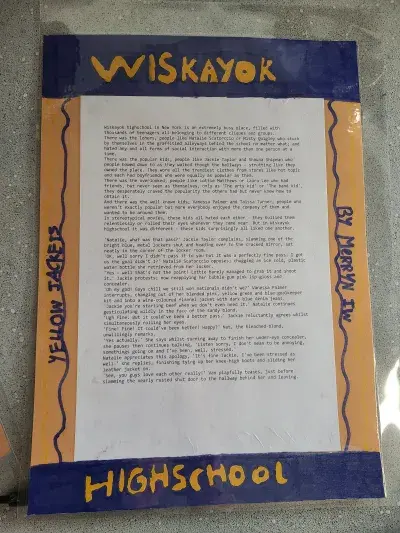Young Writers Unleashed: Creativity in the Classroom
We continue our series of reflections on our pilot Thrive Education project, a 15-week Alternative Provision (AP) for young neurodiverse people struggling to attend school or who have partly dropped out. Here we share how students brought stories and poetry to life through imagination.
Building Confidence Through Storytelling

In a recent English session, students had the chance to unlock their creativity through storytelling and poetry. Rather than focusing solely on grammar and structure, they explored how language can be used to engage an audience and bring characters to life.
Many of the students started out believing they couldn’t write or that they weren’t creative. They lacked confidence in their own abilities and often hesitated to put their ideas on paper. However, through this process, they discovered their own power and imagination. By letting go of rigid structure and focusing on creativity, they began to see that they had incredible stories to tell.

Bringing Stories to Life
The students produced some incredible story starters after studying the first page of Harry Potter and the Philosopher’s Stone. They analysed how the main character, Harry, was introduced through the perspective of the Dursleys, rather than direct description. Inspired by this technique, they crafted their own engaging openings, using adjectives and adverbs to create vivid images.
To encourage creativity, they wrote in a "free flow" style, letting their ideas pour onto the page without worrying about structure. Afterward, they shared their stories with the group, demonstrating their awareness of an audience. Each student’s work was then printed and mounted, and they decorated the edges to reflect the themes of their stories. One student, for example, designed a border featuring a goblet with flames, reminiscent of Harry Potter and the Goblet of Fire. This artistic touch helped them think more deeply about how to represent their stories visually.

Festive Poetry with a Personal Twist
For Christmas, the students channelled their creativity into acrostic poems. They chose topics that resonated with them, from traditional holiday themes to humorous and unexpected subjects. Poems about ‘Monopoly,’ ‘Antler,’ and even the amusing tale of ‘Uncle Rick’s Horrible Christmas’ brought a variety of tones to the session. Some students explored deeper meanings, while others had fun with playful rhymes. A few even wrote about stars, perhaps alluding to the Star of Bethlehem.
After sharing their poems aloud, their work was mounted and laminated - ready to take home as a keepsake of their creativity and hard work.
Word Searches
The children created their own word searches after having had the opportunity to try some out. They were asked to think about what strategies they used to find the clues. They talked about looking for hidden clues horizontally, vertically, diagonally as well as those written backwards. We talked about what topics they would like their word search to be about. Choices came up such as footwear, nature as well as the attendees at the Thrive group. We recapped the rule that clues should be written in either capital letters or lower-case letters. Once those were in, they were then hidden by other letters from the alphabet. The list of hidden words was written down for the others to find. The children then had their own word searches photocopied and really enjoyed trying out each other's work.
Celebrating the Power of Student Imagination
These activities went beyond simple writing exercises, and provided opportunities for students to explore the power of language in a way that was both meaningful and fun. For many of these children, this was the first time they truly believed they could create something amazing. Through storytelling, poetry, and word searches, they developed their confidence, creativity, and ability to engage an audience. Seeing their own work printed and shared with others reinforced the idea that their ideas and imagination are valuable. They left the sessions knowing that they are capable of more than they ever thought possible.
